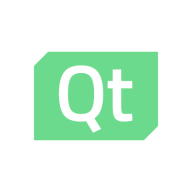

Tricentis Tosca and Qt Squish compete in the field of software testing tools. Tosca appears to have the upper hand in scriptless automation, making it user-friendly for non-technical users, while Squish excels in its robust scripting capabilities and UI component mapping, particularly advantageous for Qt applications.
Features: Tosca offers model-based automation, drag-and-drop functionality, and robust Excel integration useful for diverse applications such as SAP and Oracle. Squish provides extensive support for multiple GUI technologies, strong object identification tools, and a versatile IDE accommodating various scripting languages.
Room for Improvement: Tosca can face challenges with complex non-GUI applications, struggle in object recognition, and have integration complexities. Squish could improve its flexibility in licensing and make its IDE more intuitive while enhancing object identification processes.
Ease of Deployment and Customer Service: Tosca supports flexible deployment options across on-premises, hybrid, and cloud environments with comprehensive customer service. However, it faces criticisms in response times. Squish, mainly deployed on-premises, provides highly responsive technical support, giving it an edge in resolving issues swiftly.
Pricing and ROI: Tosca is generally expensive, potentially discouraging smaller enterprises, but promises high ROI with its broad capabilities and automation gains. Squish is also considered pricey, with concerns about licensing flexibility. Both tools report strong ROI due to reduced manual testing and improved efficiency, with Tosca particularly effective for complex enterprise testing.
For the part that has been automated in Qt, not everything is suitable for automation.
Tasks that typically take ten hours are reduced to two to three hours, representing a threefold productivity gain.
My experience has been positive; their response to emails or phone calls in tech support is fast, usually between eight to ten hours.
There is no way to mark the importance or criticality of incidents when creating them.
They provide 24/7 support with resolution times within one to two hours.
With one license, just one user or one test scenario can be run at a time.
It covers a breadth of applications and products, demonstrating excellent scalability that I have seen in reality.
Scalability is excellent with Tricentis Tosca.
For performance and stability, Tricentis Tosca deserves a 10 out of 10.
The stability of Tricentis Tosca is rated ten out of ten. It is very stable.
I find stability issues when using the Vision AI feature; Tricentis Tosca is not very stable.
If you want to run it for different versions of the software, then you need the Qt version of Java.
Moving to a cloud-based application rather than a desktop one could improve Tosca.
The Vision AI implementation works very slowly, affecting the speed of our work.
If a button in an application changes, Tricentis Tosca should be smart enough to detect the change and still execute the script seamlessly.
For the developer license, it is about $5200 a year.
The pricing for Tricentis Tosca is extremely high, and I rate it as ten in terms of expense.
A yearly license costs around 20,000 euros.
For enterprise customers, the cost is manageable because it provides solutions for multiple applications they want to automate.
For the parts that have been automated in Qt, not everything is suitable for automation.
It allows for drag-and-drop functionality and demo automation in SAP-based applications, which can be challenging with other automation tools.
The modular approach reduces scripting effort by at least fifty percent, which significantly cuts down on the script development time.
The most useful features of Tricentis Tosca include API scanning, basic web application automation, and data validation capabilities.
| Product | Market Share (%) |
|---|---|
| Tricentis Tosca | 20.4% |
| Qt Squish | 3.4% |
| Other | 76.2% |


| Company Size | Count |
|---|---|
| Small Business | 10 |
| Midsize Enterprise | 2 |
| Large Enterprise | 9 |
| Company Size | Count |
|---|---|
| Small Business | 22 |
| Midsize Enterprise | 24 |
| Large Enterprise | 72 |
Take the complexity out of testing graphical user interfaces (GUIs) and human-machine interfaces (HMIs) – even in the face of product evolution and safety-critical applications.
Tricentis Tosca offers model-based testing that supports both technical and non-technical users through a user-friendly interface, enabling scriptless automation and seamless integration with UI and non-UI applications.
Tosca's modular approach enhances test maintenance and reuse while delivering comprehensive automation for diverse testing environments. Backed by risk-based testing and automated data management, it supports end-to-end testing across API, SAP, and desktop applications. Tosca's integration capabilities extend to environments like Salesforce, PHP webshops, and mobile apps, effectively enhancing Agile team workflows. Despite its strengths, room remains for improved reporting, object recognition, and more efficient upgrade processes. Enhancing documentation and mobile testing support could further elevate its functionality for many.
What key features does Tricentis Tosca offer?In retail, Tricentis Tosca automates inventory and transaction testing, ensuring efficient system updates. Financial services employ it for regulatory compliance through automated test scenarios in mainframe and PDF environments. Telecommunication companies utilize Tosca for API testing, aligning services across network platforms seamlessly.
We monitor all Test Automation Tools reviews to prevent fraudulent reviews and keep review quality high. We do not post reviews by company employees or direct competitors. We validate each review for authenticity via cross-reference with LinkedIn, and personal follow-up with the reviewer when necessary.